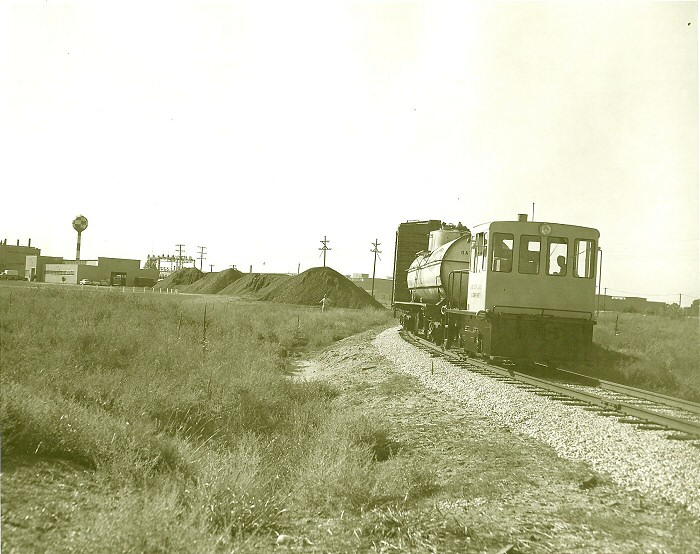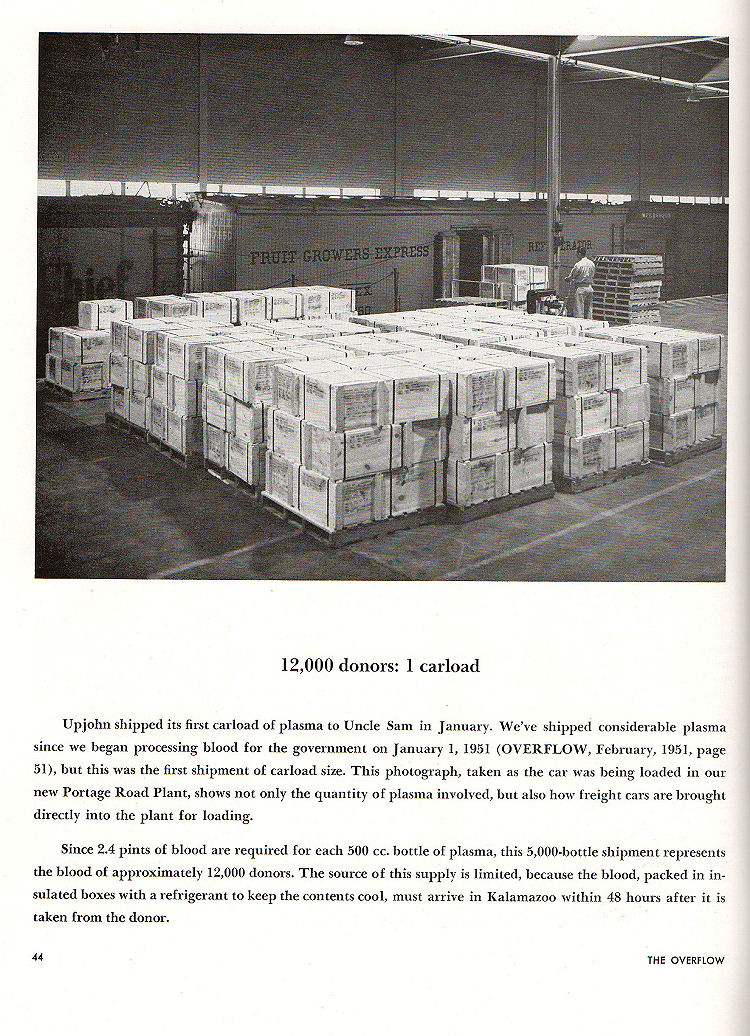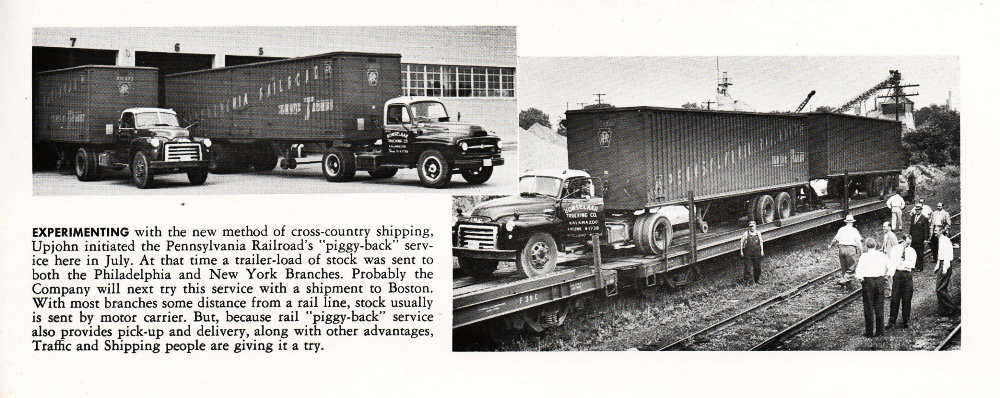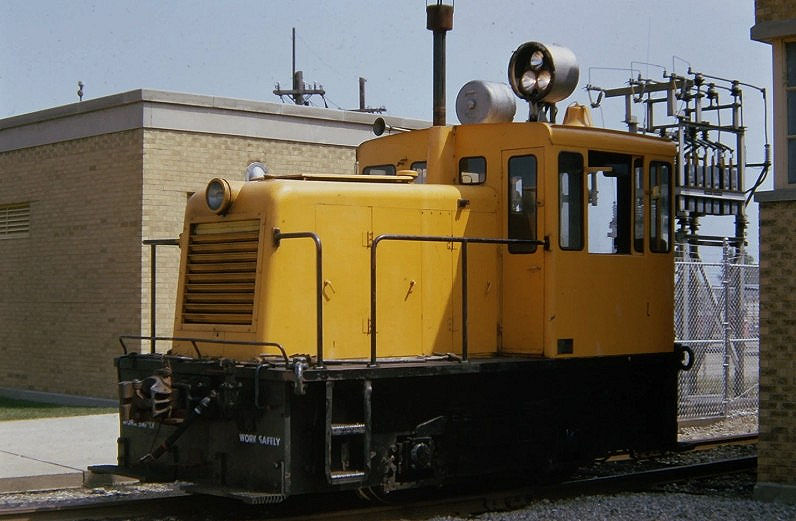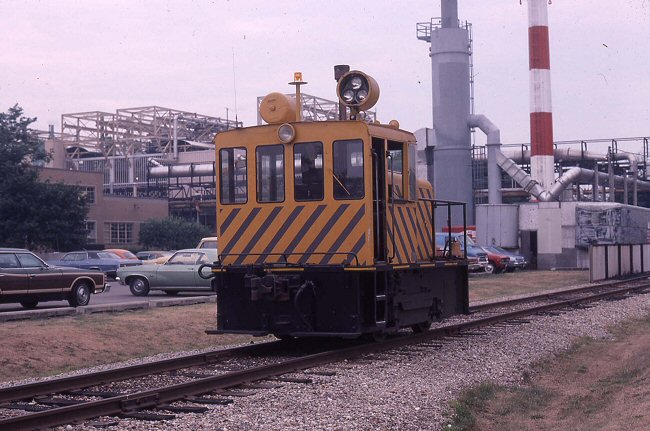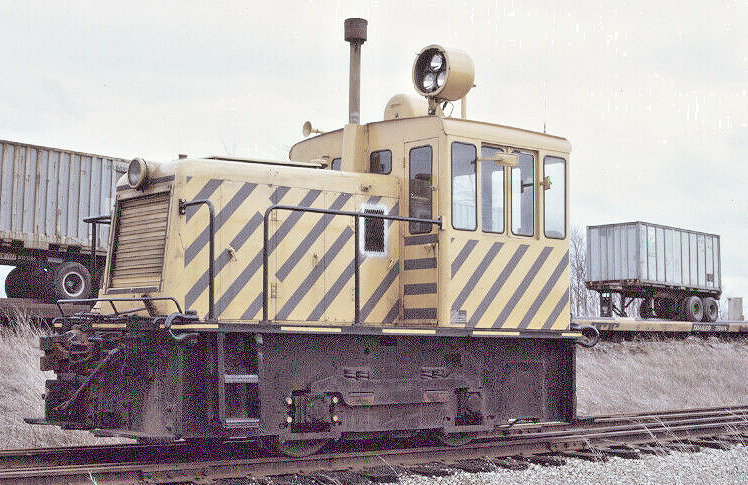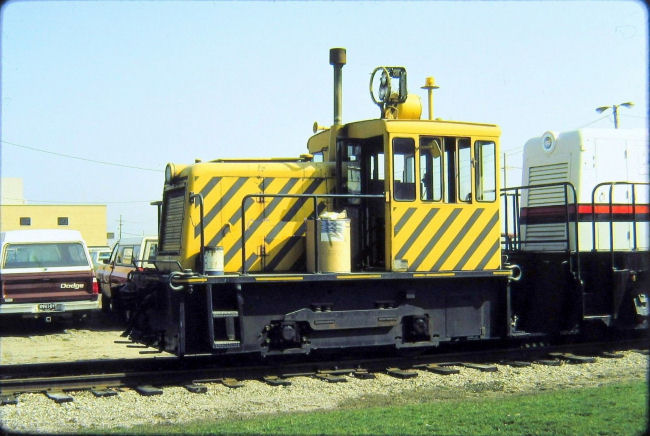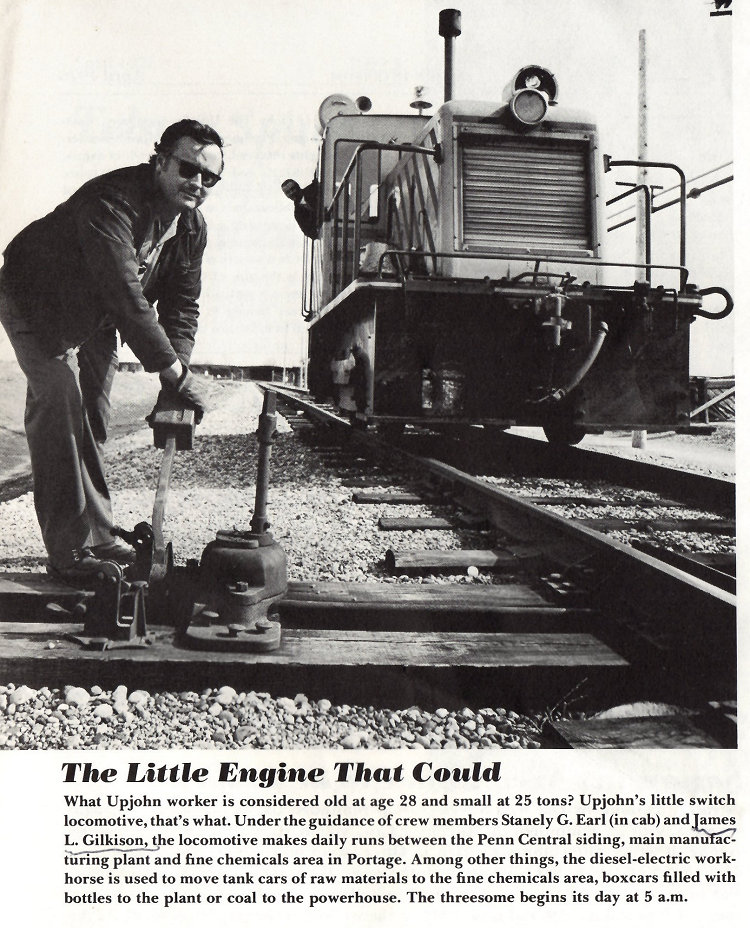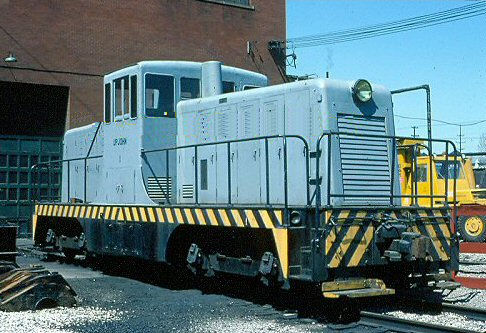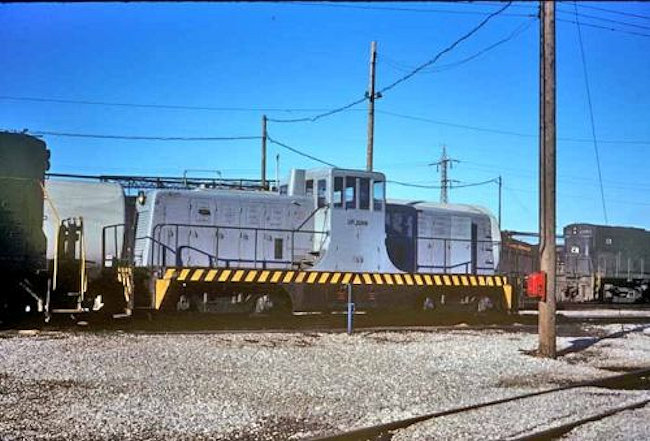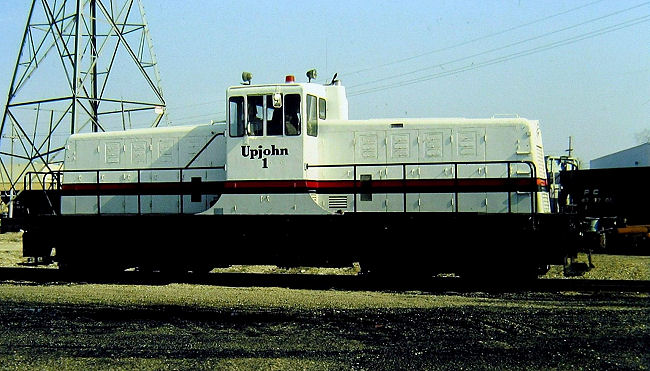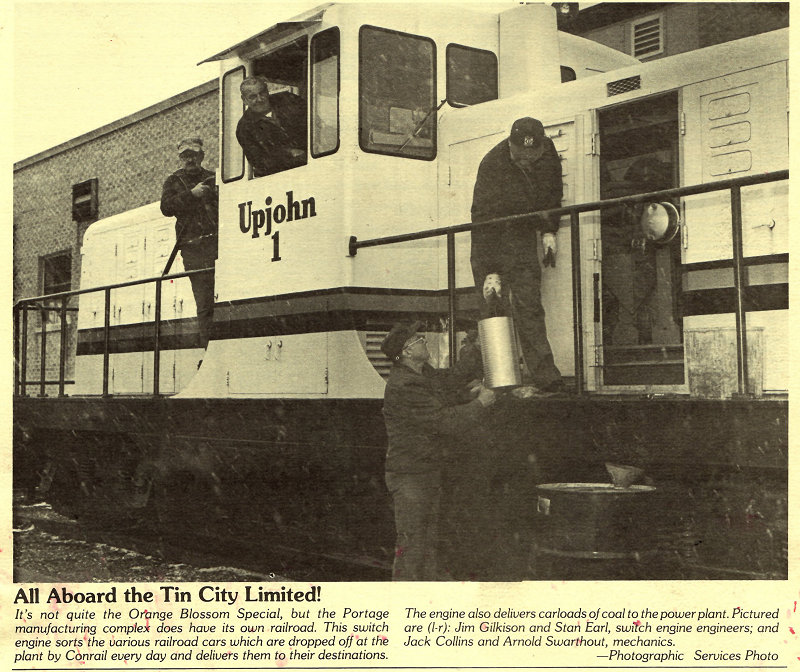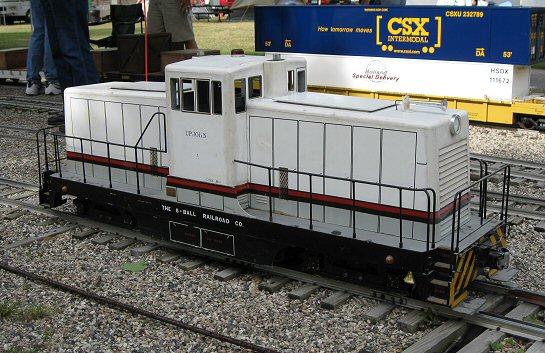The spur from the
Pennsylvania Railroad to The Upjohn Company manufacturing
complex in Portage was installed early in the construction of
the site in the late 1940s.
Most of the construction materials and
steelwork were brought in by railroad. From movies taken of the
construction, it appears that the first Upjohn switcher, a new GE
25-ton unit, did not show up on site until the initial
construction was well under way. Before then, railroad cars were moved
around by a bulldozer so construction materials could be
unloaded at the right place.
At the start of manufacturing,
91% of inbound shipping, not including coal, was by rail. This
means that practically everything came in by rail. Boxcars and
TOFC were used to send out Upjohn finished products to five
distribution centers - New York, Dallas, Los Angeles, San
Francisco and Portland. However, in 1973 trucking took over all
ground shipping to the distribution centers. The rail spur
continued to handle inbound materials, solvents and coal. By
1984 the percentage of inbound shipping delivered by rail was
still 75% when including coal. The amount of coal delivered at
that time was 165,000 tons a year. It was stockpiled at the rear
of the facility and taken to the power-house every day using a
small fleet of Upjohn-owned open hoppers.
When the
first switcher became too small for all the work, a more
powerful 44-ton GE machine, previously used by the U.S. Navy,
took over in 1977. Photos of both are shown below. The original locomotive
was stored in the Building 41 south-east warehouse bay for many years, finally being
transferred to a Monsanto facility in Missouri in the late
1990's. The second Upjohn switcher was replaced in the early
2000's by a larger Alco unit. This switcher is still used daily
at Pfizer in 2025.
